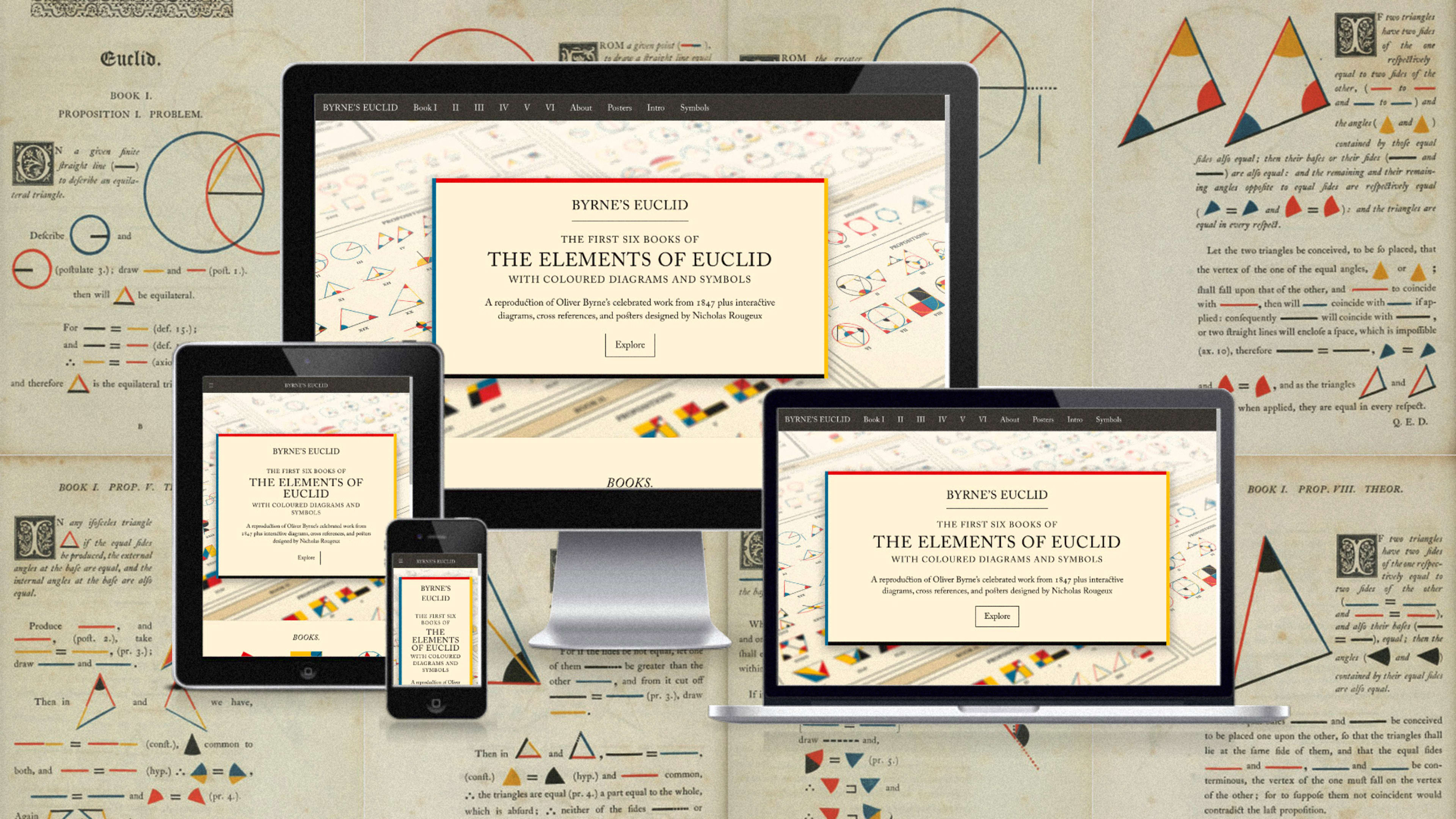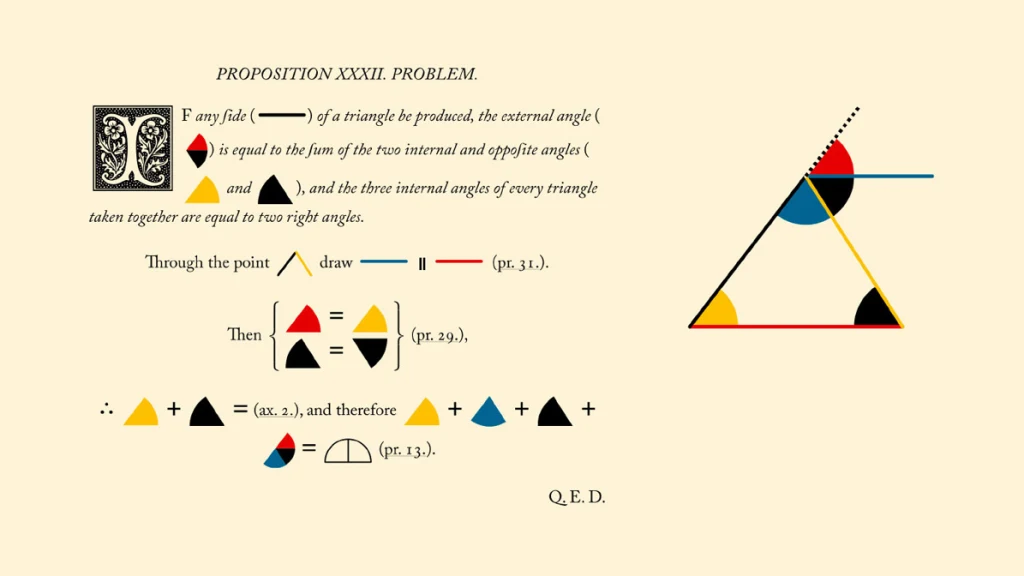2,300 years ago, Euclid of Alexandria sat with a reed pen–a humble, sliced stalk of grass–and wrote down the foundational laws that we’ve come to call geometry. Now his beautiful work is available for the first time as an interactive website.
Euclid’s Elements was first published in 300 B.C. as a compilation of the foundational geometrical proofs established by the ancient Greek. It became the world’s oldest, continuously used mathematical textbook. Then in 1847, mathematician Oliver Byrne rereleased the text with a new, watershed use of graphics. While Euclid’s version had basic sketches, Byrne reimagined the proofs in a modernist, graphic language based upon the three primary colors to keep it all straight. Byrne’s use of color made his book expensive to reproduce and therefore scarce, but Byrne’s edition has been recognized as an important piece of data visualization history all the same.
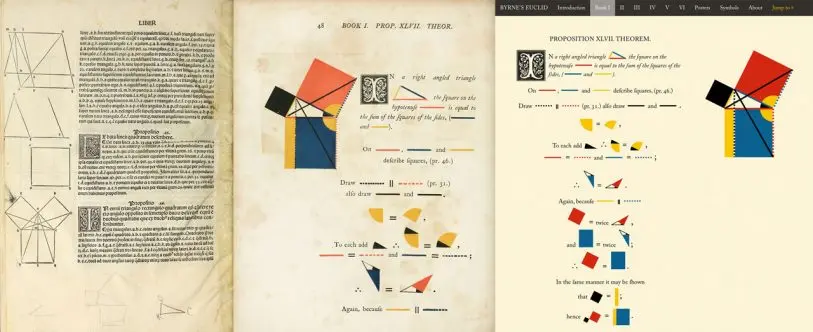
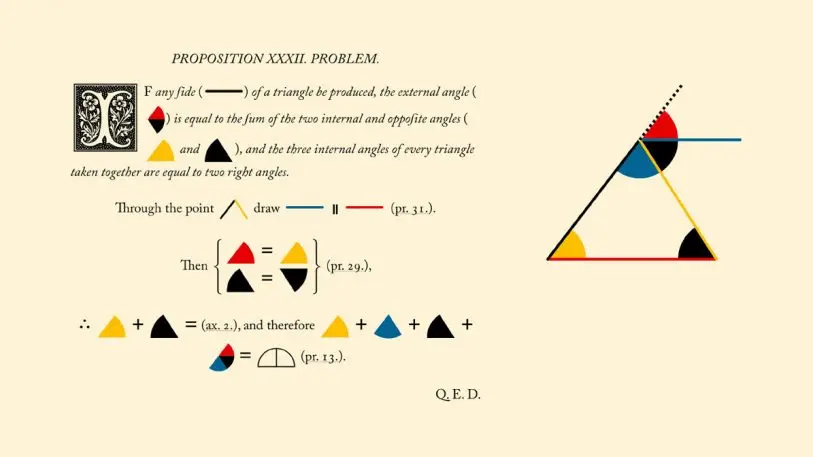
“The hardest thing was creating a design that I was happy with that stayed true to the original (typography, illustrations, colors, etc.) while embracing modern conveniences that come with a website (scrolling, navigation, interacting with diagrams, device compatibility, etc.),” writes Rougeux over email. “From a technical standpoint, the trickiest part was making sure all the shapes and equations were formatted correctly and consistently.”
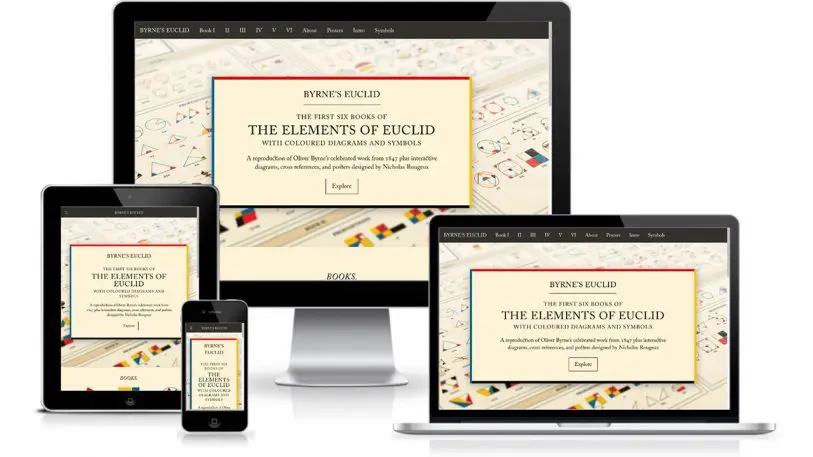
The font was the easy part. The original books were printed in Caslon, which is part of Adobe’s products to this day. The woodcut stamped letters that begin various sections were digitally traced and re-created. And as for the equations and their diagrams–that’s the subject of Rougeux’s very deep and technical how-to. Suffice it to say, this part was a pain.
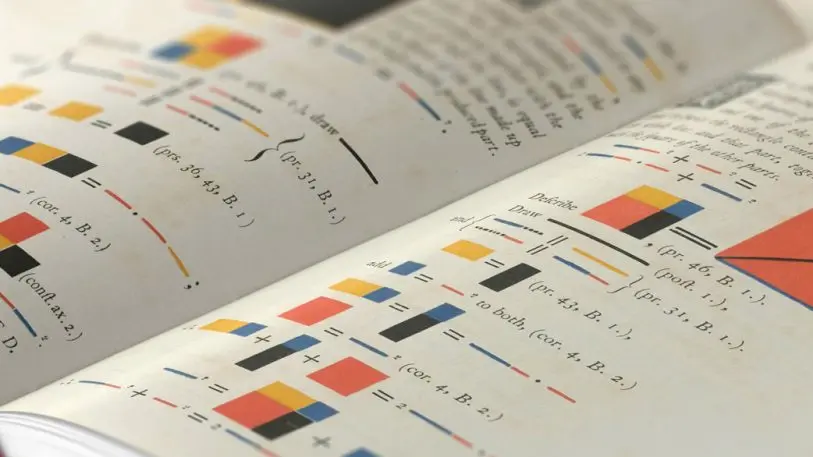
But the effort was worth it, because the experience of reading Byrne’s Euclid online is pleasingly anachronistic. Your brain recognizes this old text, yet the first time you click on an angle in the text–to see every other bit of the diagram melt away for optimal clarity–you realizes that dang, this still works. And yes, it’s hard to believe that the foundational visual logic was developed over 150 years ago, even if Rougeux is the first to admit it’s been improved upon since.
“My hope is that this site exposes more people to the beauty of Byrne’s design. I know he didn’t intend the work to be viewed as a work of art (he says so in the introduction) but it truly is–even if some of his interpretations aren’t entirely correct or there are better ways to achieve them,” says Rougeux. “It can be used as a reference in a way but there are much better alternatives available for learning Euclidean geometry, like videos on YouTube or textbooks that are easier to understand. I just hope people enjoy the idea of exploring something old in a new way.”
You can try the site here, or buy prints starting at $27 here.
Recognize your brand’s excellence by applying to this year’s Brands That Matter Awards before the early-rate deadline, May 3.
